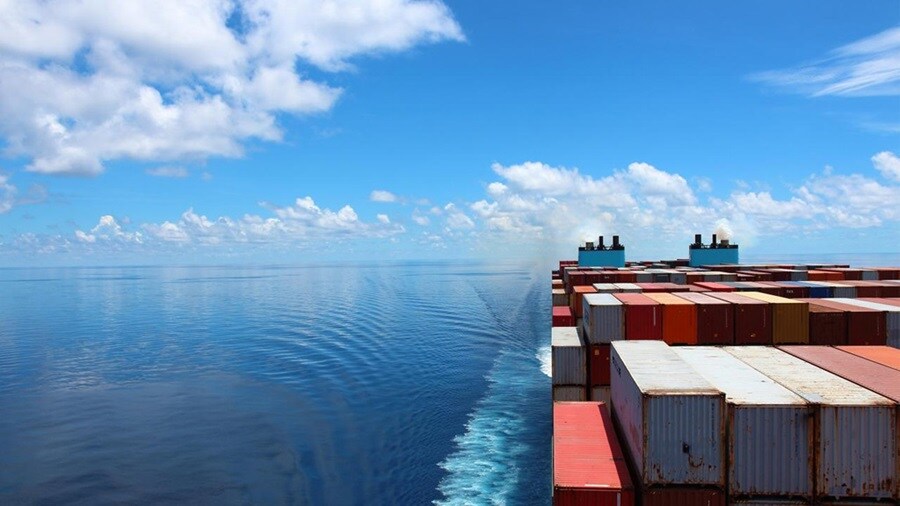With new regulations and decarbonisation targets for the shipping industry coming into play, the demand for green fuels is steadily rising.
The shipping industry currently uses more than 300 million tons of fossils fuels per year. This makes shipping one of the greatest polluters, accounting for 3% of total global carbon emissions. Recently, the International Maritime Organization (IMO) unanimously agreed on an ambition to reach net-zero greenhouse gas (GHG) emissions from international shipping ’by or around’ 2050 (listen to more on that in episode four of the Beyond the Box podcast). According to a recent report commissioned by the International Chamber of Shipping, meeting this goal would require an 18-fold increase in existing renewable production capacity.
So, what green fuels are available, which are in development, and what will it take to meet global demand in the coming years and decades?
What are green fuels?
CEO of the Global Centre for Maritime Decarbonisation in Singapore, Professor Lynn Loo, explains that green fuels are “low carbon in nature and made with renewable electrons”. These fuels are produced from hydrogen and electricity from renewable sources. There are also blue fuels, which are made with a fossil fuel base of natural gas, but then the carbon is captured so it doesn’t enter the atmosphere.
According to a survey of shipping industry leaders conducted by Professor Loo’s centre and partners, projections of sea fleet fuel consumption for 2050 are split evenly among green ammonia, biodiesel, and fuel oil (16% each). Next in line are blue ammonia, liquefied natural gas (LNG), e-methanol, biomethanol, biomethane, and e-methane – all recording between 6% and 10%.
The same survey found that 12 of the shipping companies they spoke to (46%) had already run pilot programs involving one or more low-carbon fuels and have further plans for further implementation. However, nine respondents (35%) had taken no action on greener fuels, which explains why one-third of respondents also said they ‘don’t know’ which types of fuels their fleets will run on in 2023 and 2050,
Matching supply and demand
To date, green ammonia, e-methanol and biomethanol have emerged among the strongest contenders to propel the transition to green fuels.
Ammonia is a hydrogen carrier and fuel, which can be easily turned from gas into liquid. Thanks to that and existing distribution networks, it is considered a cost-effective way to transport renewable energy. Ammonia is made up of only hydrogen and nitrogen, so it does not emit carbon dioxide when used. If made using green hydrogen, it can also be produced without emitting carbon dioxide. However, it is highly toxic, so its impact on vessel design needs to be considered. The total global market volume of ammonia in 2020 was 183 metric tons. By 2050, this is predicted to rise to 688 metric tons, of which 566 metric tons would be green ammonia.
E-methanol is produced by combining green hydrogen and captured carbon dioxide, while biomethanol is produced from biomass like forestry or agricultural waste and byproducts. The Methanol Institute calculates that e-methanol and bio-methanol projects around the world are on track to produce more than 8 million metric tons a year by 2027. However, some estimates say we will need as much as 540 million metric tons by 2050 to fully replace fossil fuels in shipping.

The bunker shipping company Monjasa supplied 6.4 million tons of fuel to the global marine industry in 2022. The company’s Group Responsibility Director, Jesper Nielsen, says that there are some key challenges to address in the green fuels market: “There is a wide cost gap that has not been dealt with and it is causing widespread apathy across the industry. There are also no clear consequences of noncompliance. And then thirdly, there is just no easy long-term solution for any ship owner. When you combine these three factors, we are just in for a couple of tough years.”
Towards a successful green transition
The shipping industry has started to send the demand signals for green fuels. Although parts of the industry are lagging, many are beginning to pay their part. For example, there are currently about 100 more alternative fuel vessels on order. The first of these, a container vessel sailing on green methanol, will begin operating in the Baltic Sea from September 2023. These orders are contributing to sending a strong demand signal, which is crucial to signaling a supply response.
The sustainable energy company, Sungas Renewables, is encouraged by what it is seeing in the industry. “We have been surprised at how few obstacles we have seen. Not just for green methanol but in any areas where it’s going to be hard to electrify,” says David Lamont, Sungas’ Senior Vice President of Corporate Development. “The will is there. We are seeing companies leading the creation of demand. The capital is forming rapidly to build massive amounts of global infrastructure to deploy these fuels. The technology to produce green methanol at scale is ready today. And I think we are all demonstrating the kind of collaboration that is needed to catalyse a huge amount of progress in a really short amount of time.”
Listen to episode five of the Beyond the Box podcast to learn more.
Deseja se manter atualizado sobre as próximas tendências indispensáveis do setor?
Você conseguiu! Bem-vindo(a) a bordo!
Algo deu errado
Deseja se manter atualizado sobre as próximas tendências indispensáveis do setor?
Receba nossos insights diretamente em seu e-mail inscrevendo-se por meio deste formulário e descubra um mundo de logística verdadeiramente integrada. Inspire-se com nossa seleção de artigos personalizados e conheça mais insights pertinentes de negócios com apenas alguns cliques. Você pode cancelar sua inscrição a qualquer momento.














